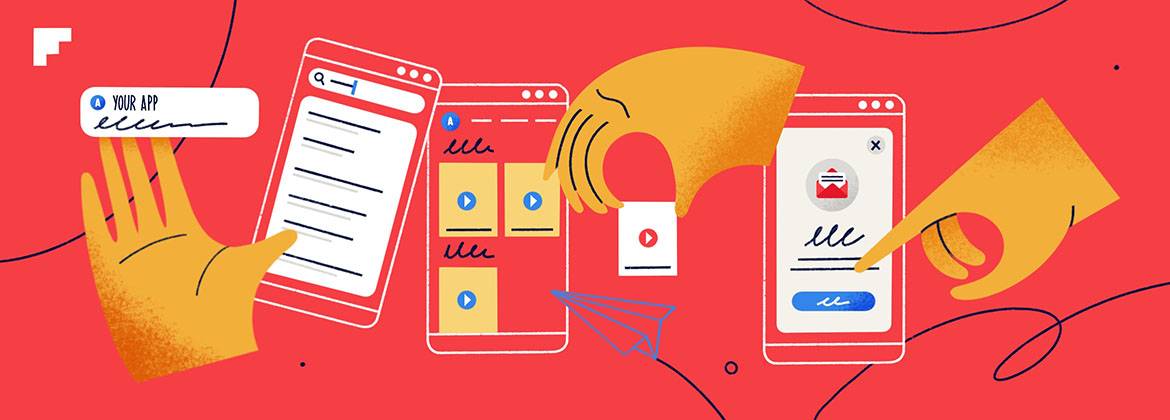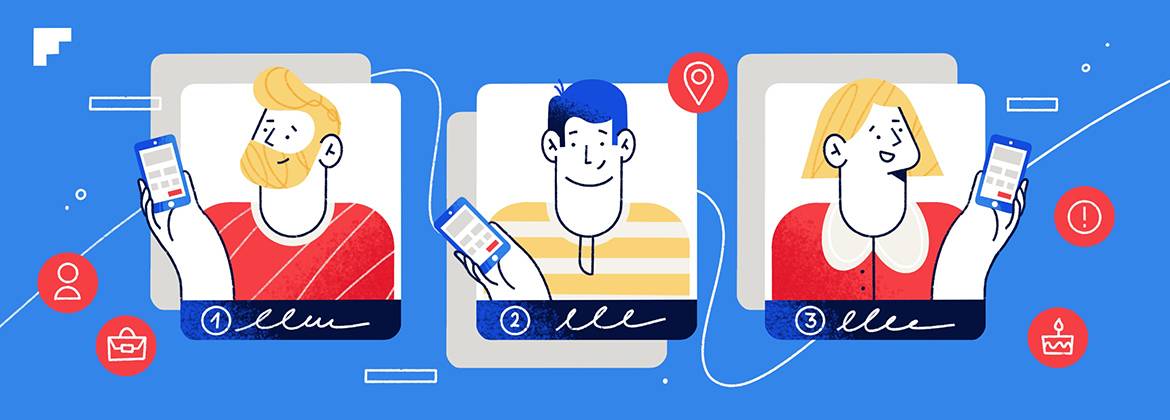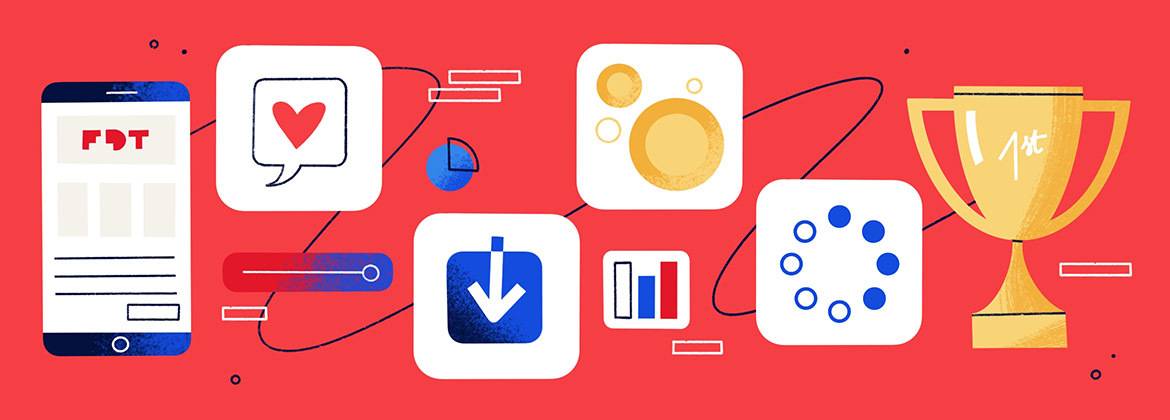
6 methods of mobile app personalization
Are you looking for ways to increase user engagement in your mobile app? Or maybe you'd like them to use it more often and longer? You should consider mobile app personalization. It’s about tailoring the app experience to meet the needs of a specific user.
In today's world, people got used to individualized and relevant recommendations, suggestions and offers. Personalized playlists on Spotify, product suggestions on Amazon, Instagram's explore tab, suggested movies on Netflix... All these services are always tailored to you and it works.
Contents
What’s mobile app personalization
Personalization is all about tailoring the app experience to meet the needs of a specific user. It’s a process of building features in a mobile app having in mind the expectations of your audiences. Just as the name suggests, the process is about creating an app that meets the requirements and needs of each user individually, not all of them at once.
Why is mobile app personalization important
Global mobile app downloads in 2020 reached 230 billion. Do you think people keep all the apps they downloaded once on their smartphones? Unfortunately not, because it’s impossible to use so many apps. We simply don’t need a couple of apps tracking our habits, tons of social media and networking apps or e-commerce apps for every store we once made a purchase in. That’s why, to stand out in the market and make users keep using your app, you need to make it personalized and tailored to their needs, so that they’ll simply choose it above others. There are many tactics for increasing the number of downloads and user retention. Mobile app personalization is one of the best ways to create an app that users will actually enjoy using.
Mobile app personalization methods
There are different ways to personalize and customize your mobile app to the users’ needs. Remember that choosing all of them or lots of them at the same time will probably bring you great results but also you won’t be able to measure which ones work best for your app. This will be possible with well-configured analytics. Below you’ll find a section about mobile app analytics – tools to help you measure the performance of each method. But now let’s focus on methods of app personalization to know them better.
Push notifications
Push notifications don’t have to be annoying. Push notifications don’t have to be advertisements. They can be really great when it comes to mobile app personalization. Why? Because if the user of your app receives a message (a notification) just at the right time and place, with the relevant content… they’ll be simply delighted.
Imagine addressing a hungry person coming back home with a text “Hungry? Get a discount on delicious burgers from X restaurant now!”. Well, that would work. Moreover, it already works. Mobile apps do that to us even if we don’t notice.
You may have the impression that it’s impossible to predict when users are hungry. But once you do the research, it might turn out to be very easy. Let’s say that 60% of your users finish work at 3.00 to 3.30 PM. No wonder they’re hungry at 4.00 PM! Everybody feels that after work. Well, maybe not everybody, but attracting some users is a success you need. You can also take a look at the data about the hours at which the user ordered food most often and based on this information deliver a notification at the appropriate time.
Pop-ups and dialogue boxes
Just keep in mind that pop-ups in mobile apps aren’t there only to draw the user’s attention. It's kind of an obvious function. It will draw attention, but the question is: will this attention be properly used? It isn’t very easy, but one way to do that is to make the pop-up helpful for the user. Place the pop-up screen at the right place and time, put the right information there and the user will be able to make use of it. The same goes with dialogue boxes. “Do you need assistance? Text our customer support here” – that’s what your customers need in the app. Where exactly? Do some research concerning user behavior. In this case, specifically look for the moment when users start looking for help and don’t let them look for it too long next time.
You can also try to figure out what information customers would like to see in particular spots in the app. A pop-up can alert users about a new offer or discount, display personalized content, for example with the customer's name, or include the user's interests… There are many possibilities. But what's most important is that it’s actually helpful and useful. We’ve already learned to ignore all these “buy!” slogans screaming at us all the time.
Displayed content
It’s no surprise that the content displayed in the app should be tailored to the user’s needs, motivations, previous actions, interests etc. Look at the example of Netflix, where each user sees different movies at homepage, based on what they’ve already watched and liked. Basically, the user's screen should show what they are interested in. To make that happen, you need to do what it takes to get to know the users of your app.
Relevant content provides personalized user experience. And by taking care of personalized experiences you can simply make your app stand out on the market and boost your business.
Search recommendations
Search recommendations are placed in apps which use search bars. They give you hints on keywords you might want to see in search results while you type in the search bar. They also provide a sense of personalisation, as the app "guesses" what the user wants to type, which is very convenient for them. Search recommendations can be based on previous user’s searches in the app or outside of it or on previous purchases.
Location-based app personalization
If the user gives a permission for that, you can see their location and create content, notifications, recommendations and search recommendations based on it. This makes the personalization even easier as you know what can be valuable to users being at a particular location.
Location-based app personalization can be applied in e-commerce and food delivery apps, among others, because once you know where the customer is, you can provide them with discounts and offers at places near them. For example, in a restaurant app, you can provide the user with a discount at a place that’s near their location and this will definitely encourage them to stop by and order there. In a food delivery app, let users know about fast deliveries from nearby venues with notifications and homepage propositions.
Discounts and special offers
Discounts are always a good idea to keep the app users in and attract new customers. But how to make them personalized? A discount that is tailored to the particular user will work even better than a standard one. An example can be a promo code based on previous orders. It’s also not very hard to automate these actions. For example, if the user bought a cloth last month, it’s highly likely that you can encourage them to buy some other cloth now, keeping in mind that they probably wouldn’t like to buy the same thing again. It could be anything of the same colour or style, or something else that matches a previous purchase.
Discount notifications can even be contextualised directly to make the customer feel special, such as "Emma, we have a promo code for your favorite restaurants".
Mobile app analytics
Remember that before you can personalize the app, you need to take care of mobile app analytics. Collect the right user activity data to understand them and their preferences, such as:
- when they’re using the app
- likes and dislikes
- purchase history
- viewed products
- age, gender, profession etc.
Mobile app personalization needs to be based on the target group – users you want to keep or attract. That’s why, apart from analysing users’ activities and history, you need to know their characteristics, needs, motivations etc. What can be helpful in doing that is mobile app analytics, but also creating a user persona.
And once you implement the mobile app personalization you need, track the results to see which ones work best. Here you’ll find top 17 mobile app metrics to track – they simply help you measure the success of your mobile app.
Conclusion
There are many possibilities, the choice depends on the type of your product or service.
In summary, if you want to increase user retention, engagement and experience, then add personalization to the app. Things that will help you prepare for that are: creating user personas and tracking mobile app metrics. Test and track the results to choose the best method. Good luck!







